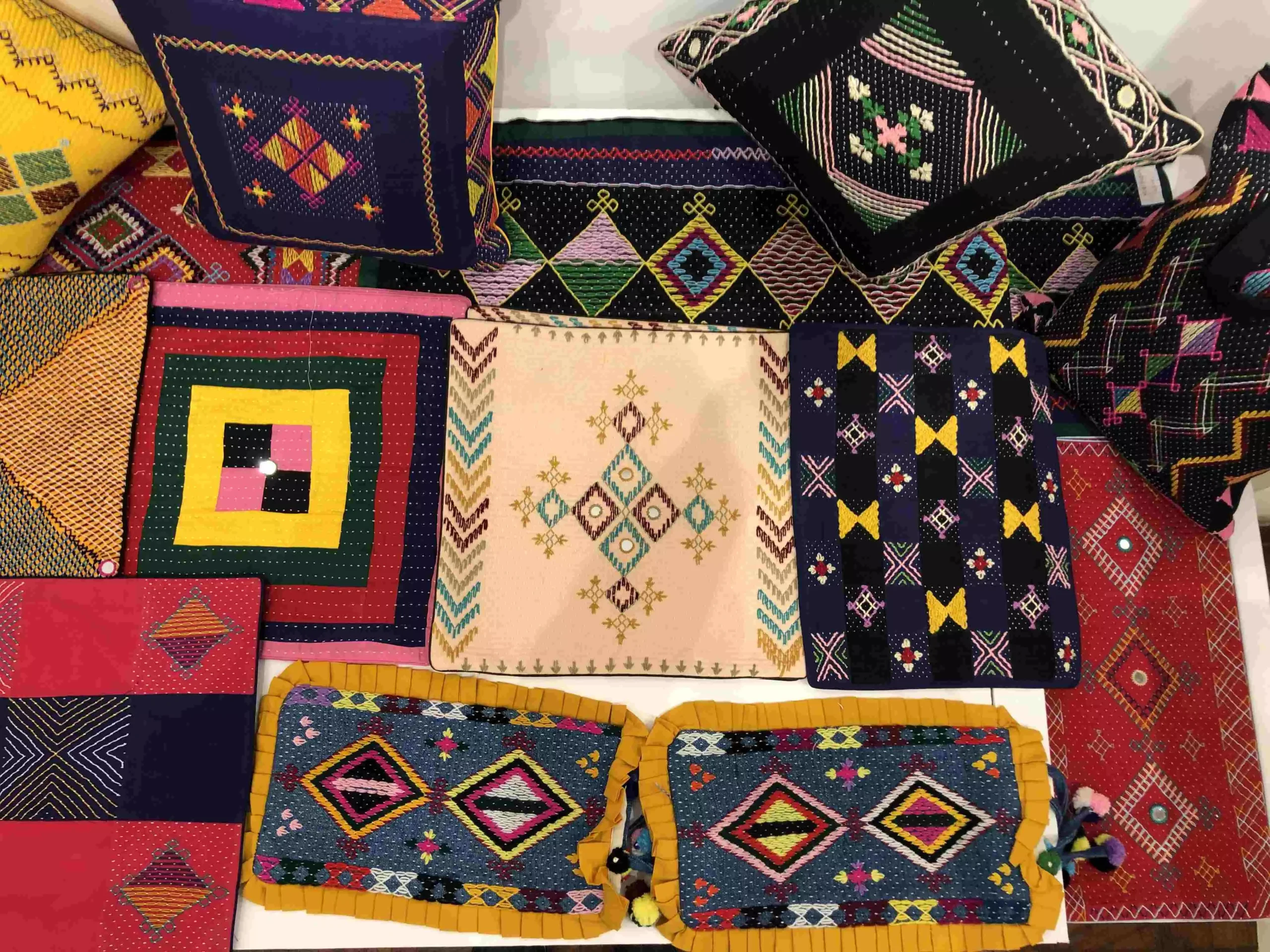New Delhi
Vibrant coloured threads like acrylic wool yarns and silk, mirrors, and bright motifs greeted the visitors to a recent exhibition held as part of the ‘Kalbelia Craft Revival Project’. A handful of artists, mostly women, from the Kalbelia community, a denotified tribe of Rajasthan showcased their intricate and traditional embroidery and quilting techniques at the exhibition held at India International Centre (IIC), New Delhi from July 19 to July 26.
The Kalbelia community is predominantly nomadic and found in parts of the Thar desert, in India, Pakistan, and portions of Afghanistan. In Rajasthan, they usually come from Bundi, Ajmer, Udaipur, and Pushkar regions.
Watch Video
This denotified tribe has its own craft known as Kalbelia art, which its women have been practising for generations. The gudari work or quilting is done on recycled pieces of fabric. The motifs have evocative names such as nariyal ful (coconut flowers), chiriya ke pankh (wings of a bird), bajubandh (armlet), bacche ki mangar (chain of kids holding hands), etc.

Artists, mostly women, from the Kalbelia community, showcased their traditional embroidery and quilting techniques at the exhibition held at India International Centre in New Delhi.
At IIC, the exhibits included a quilt belonging to Mewa Sapera (a popular Kalbelia dancer of international repute), who also inaugurated the exhibition. There were quilts from Pakistan that were made before Partition, and more recent works of art that were included by the Kalbelias as part of their daughters’ trousseau.
But, this traditional craft of Kalbelia has no patrons and is on the verge of disappearing.
“There are only three or four women left who do this quilting and embroidery,” Meera Bai, one of the artists who exhibited at IIC, told Gaon Connection. She said hardly anyone knew about their traditional craft and it was a struggle to keep it going.
“Each woman gets Rs 300 per day (dehari, or daily wage) to make quilts, and each quilt takes nearly a month to finish. It is hard work and meagre income, that is not enough to support our joint families,” she said.
Kalbelia Craft Revival Project
The Kalbelia Craft Revival Project is the outcome of a research conducted from 2019 to 2021, and titled Voicing the Community: A Study on the De-notified and Nomadic tribes of Rajasthan, Madhya Pradesh, and Gujarat.
“I stumbled upon a Kalbelia quilt at a funeral and was struck by its beauty. I thought it was necessary to introduce this craft to the world,” Madan Meena, project coordinator and trustee of Bhasha Research and Publication Centre, an organisation that works for the tribal and denotified communities and comes under the Ministry of Tribal Affairs, told Gaon Connection.
“The purpose of this project is not only to get them a source of income, but also to dispel the lens with which society views the community,” said Madan Meena. He was referring to the fact that the denotified community is often looked upon with suspicion as ‘criminal’ despite the fact that they have brought laurels to the country since 1980 when dancers from their community participated in the Festival of India, started to promote traditional Indian crafts an music, and toured the world. The Kalbelia dance expresses the community’s traditional way of life and one of the dancers, Gulabo Sapera, achieved international fame with her dance and was also awarded the Padma Shri in 2016.
The Kalbelias have had their moment in the sun when their dance and music got UNESCO’s Intangible Cultural Heritage tag in 2010. But that tag has not led to anything tangible for them as there are no platforms where they can showcase their cultural heritage, Madan Meena pointed out.

Making these involves long hours of sitting bent over the cloth, edging, bordering, and embroidering.
Struggles of the Kalbelia community
The Kalbelias were once sought after for their knowledge of snakes. For generations, the traditional occupation of this community was snake catching, trading in snake venom, and treating snakebites. But, with the Wildlife (Protection) Act that came into being in 1972, this occupation dwindled and almost disappeared. The community gets by doing daily wage labour and selling spices and grains door-to-door.
“It is not easy making the quilts. It is back-breaking work. It involves long hours of sitting bent over the cloth, edging, bordering, and embroidering. It is a strain on the eyes too,” Meera Bai said.
Abject poverty makes it hard for the members of this community to propagate their art and craft. Meera Bai, who also has her work displayed at the IIC, said that the community had no access to some basic facilities such as education, employment, health care, etc.
“The children of our community have to either leave their homes at an early age to move elsewhere in search of schools or, as it happens in many cases, they just don’t study at all,” said the Kalbelia artist.

The craftspeople are now being encouraged to embroider bags, cushions covers, travel bags, etc., that can find use in the modern household in natural dyed threads and fabrics.
Gradually the only source of income for the tribal community became unskilled daily labour. “Some of us are forced to get into rag picking or even begging,” she said sadly.
The Kalbelia Craft Revival Project gathered steam during the pandemic. “There was no ration nor medical facilities provided by the government and life was harder than usual for them. I thought quilt-making would give them some source of income,” Madan Meena said.
Exhibitions such as the one recently organised in New Delhi are helping the craftspeople, as they are now being encouraged to embroider bags, cushions covers, phone cases, table runners, travel bags, and other possible daily usage items, etc., that can find use in the modern household in natural dyed threads and fabrics.
The Kalbelia Craft Revival Project helps out with design intervention and the raw materials to the quilters to get them started.


















